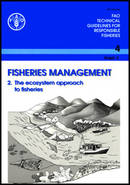Publicaciones
Aquaculture is one of the fastest growing food production systems in the world, with the bulk of its output currently being produced within developing countries, and with expectations for aquaculture to continue its contributions to food security and poverty alleviation. The vast majority of aquaculture practices around the world have been pursued with significant nutritional and social benefits, and generally with little or no environmental costs. However, it is essential for current efforts aiming at...
In addition to explanations of culture technology and methodology, the manual includes a brief discussion of the processes of identifying a suitable site for locating a hatchery and considerations in planning and designing the hatchery. It also includes advances that are likely to improve the reliability and economic viability of the hatchery industry in the near future, featuring topics such as polyploidy, the development of selected strains, cryopreservation of gametes and the need for novel,...
These guidelines have been produced to supplement the FAO Code of Conduct for Responsible Fisheries. The Code and many international agreements and conferences highlight the many benefits that can be achieved by adopting an ecosystem approach to fisheries (EAF) and elaborate a number of agreed principles and concepts relating to EAF.
These guidelines attempt to make EAF operational by recognizing that this approach is a way to implement many of the provisions of the Code and...
The paper presents technical guidelines for good aquaculture feed manufacturing practice. The guidelines were compiled for FAO in support of Article 9 of the Code of Conduct for Responsible Fisheries (CCRF) concerning Aquaculture Development (FAO, 1997), and in particular in support of Article 9.4.3 of the CCRF concerning the selection and use of feeds and additives.
The guidelines cover a number of issues, ranging from ingredient purchasing, processing, bulk storage, handling, monitoring, and documentation, to issues...
Inland fisheries differ from most other fisheries forming the subject of the Code in their high degree of inter-relatedness with other users of the aquatic resource. In most areas of the world the principal impacts on fisheries do not originate from the fishery itself but from outside the fishery.
Consequently most aspects of the Code directed at the conservation and sustainability of the resource are under the control of a wide range of interests of...






